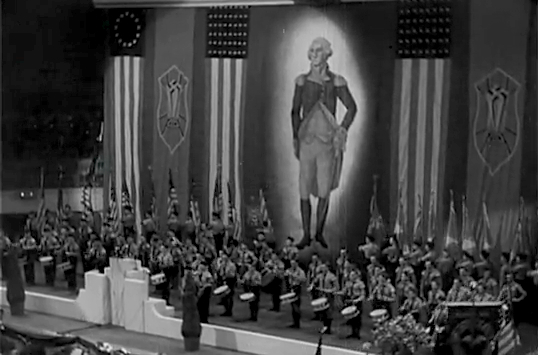From Morrisville’s spymaster to the real James Bond.
A few months ago, Georgetown University asked me to review a new historical guide due out early next year. “Spy Sites of Philadelphia and the Delaware Valley” reveals 200 tales from Colonial times to the 20th Century. It’s an intriguing, well-illustrated compendium. Here’s a sample:
Morrisville’s spymaster: Legion Avenue.
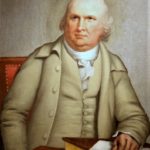
Robert Morris was a Philadelphia banker who lived in Morrisville. To a large extent he financed the American Revolution. Lesser known is his role as a spymaster early in the rebellion. He used his business contacts and finances to spy on British troops and smuggle arms to rebels. After George Washington’s famous crossing of the Delaware, the general appealed to Morris for emergency cash to keep his spy network afloat. Hard currency was sparse. Morris did what he could. In early January, he sent two bags filled with 410 Spanish dollars, two English Crowns, 10 shillings sixpence, and a French half crown. It was just enough. Washington was grateful, recalling it was “too remarkable ever to be forgotten by me.”
Plumstead’s gang of spies: 4914 Point Pleasant Pike.

Five Quaker brothers and a cousin from Central Bucks were robbers, horse thieves and spies for the British in a reign of terror that lasted a decade during the American Revolution. As Army Gen. Howe’s “Eagle Spy”, Moses Doan regularly tipped off Howe to enemy movements. He nearly foiled Washington’s victory at Trenton by warning the British garrison troops were advancing. The warning was ignored however. The gang ultimately faced justice. Moses was shot to death. Levi and Abraham Doan were hanged and buried behind the cemetery of the Plumstead Quaker Meetinghouse.
Bensalem’s traitor: 5408 Old Trevose Road.
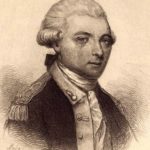
In 1774, Joseph Galloway switched sides after his bill in the First Continental Congress to keep the American Colonies under British rule failed by a single vote. Subsequently, he resigned. When Howe seized Philadelphia in 1777, Galloway became the general’s police superintendent. He sent spies into George Washington’s encampment at Valley Forge and formed bands of guerilla fighters to harass the general. Galloway, who owned most of Bensalem and lived there in Growden Mansion, fled to England when Washington retook Philadelphia in 1778. Critics mocked Galloway being a Tory – “a thing whose head is in England and its body in America, and its neck out to be stretched.”
West Rockhill’s Nazi camp: Clymer Avenue at Cathill Road.

Before World War II, there were dozens of Nazi-oriented summer camps spread across America. One of the largest was in Upper Bucks. The 40-acre campsite opened under the euphemistic name Deutschhorst Country Club. It actually was a training ground for the 200,000-member German-American Bund that supported Adolph Hitler. A brick swastika was embedded in the clubhouse wall. Fritz Julius Kuhn, an immigrant German chemist described as the “American Fuehrer”, appeared at the camp on Sept. 3, 1939, the day Germany invaded Poland. He addressed more than 2,000 followers, many in full Nazi uniforms. In a rousing speech, he chortled, “Hitler will lick the whole of Europe!” Kuhn ultimately was prosecuted and deported to Germany where he died in 1951. The camp later became a housing sudivision.
Buckingham’s inventor spy: Creamery Road, Forest Grove.
Biologist Earl Flosdorf of the University of Pennsylvania pioneered a device to freeze-dry blood in the 1930s for battlefield use. The Soviet Union envisioned Flosdorf’s invention as useful in biological warfare. He was recruited as a Soviet spy and paid $25,000 in the mid-1930s (worth about $500,000 today). In a fit of rage at home in Buckingham in 1958, Flosdorf killed his wife with a shotgun blast, then shot himself with the same weapon.
Quakertown’s actress spy: 1767 Country Lane.
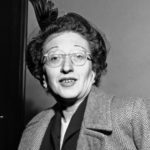
Hede Massing was a red-headed Viennese actress who was a Soviet spy in the 1920s and ’30s in New York and Europe. She quit in 1938 and relocated to Bucks County where she opened a B&B in Quakertown. In the late 1940s she revealed Alger Hiss was a Soviet spy and testified against him resulting in his conviction and imprisonment. Massing died in 1981.
The real James Bond: Messiah Cemetery, Gwynedd, Montgomery County.
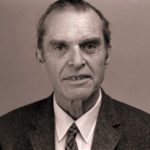
Novelist Ian Fleming was in Jamaica when he noticed “Birds of the West Indies” by James Bond, a Philadelphia ornithologist. As Fleming later put it, “It struck me that this brief, unromantic, Anglo-Saxon and yet very masculine name was just what I needed, and so a second James Bond was born.” In a letter to Bond’s wife, Fleming fessed up. “I can only offer you or James Bond unlimited use of the name Ian Fleming for any purposes you may think of. Perhaps one day your husband will discover a particularly horrible species of bird which he would like to christen Ian Fleming.” In 1989, the real James Bond died and is buried in Gwynedd near the Bucks County border.
Source is a draft of “Spy Sites of Philadelphia: A Guide to the Region’s Secret History” by H. Keith Melton and Robert Wallace with Henry R. Schlesinger (forthcoming, Georgetown University Press, February 2021) and “The American Fuehrer Fritz Huhn’s Neo-Nazi Rally in Sellersville was his last hurrah” by Frank Whelan of the Sunday Call-Chronicle of Allentown published on May 12, 1985.

